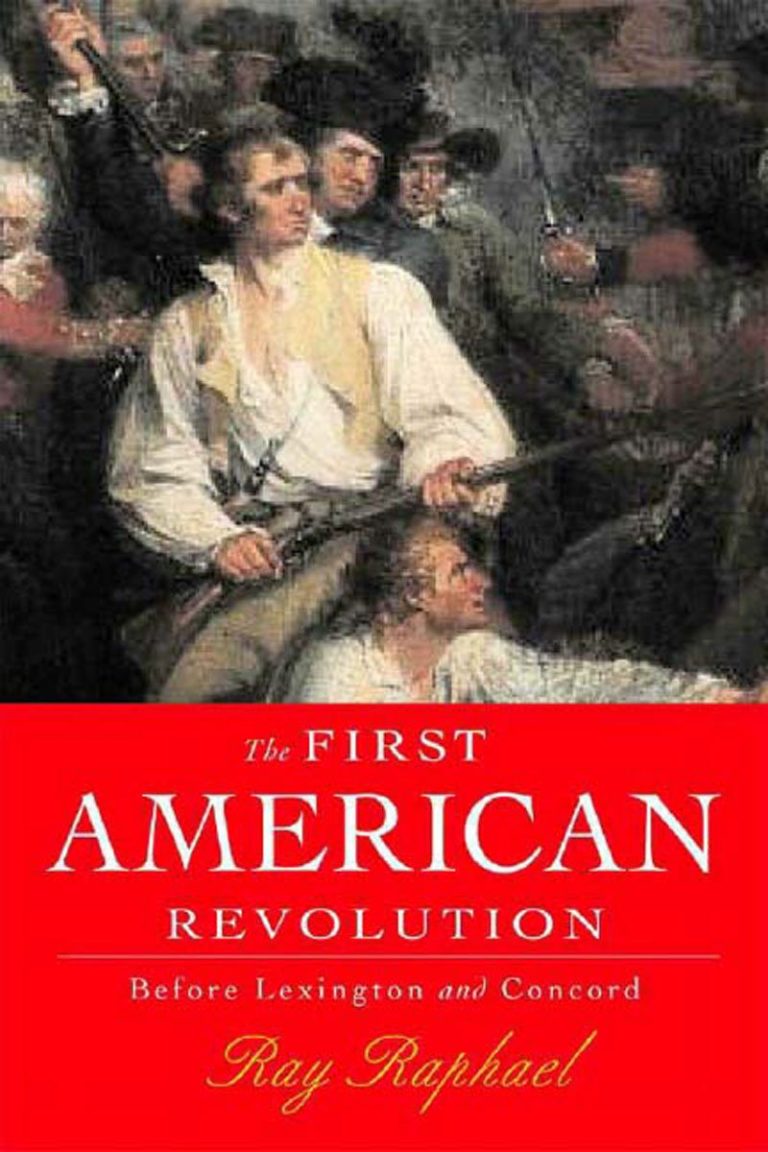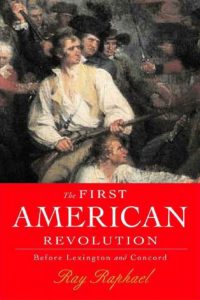When Did the American Revolution Begin?

Written for both general and scholarly audiences, Ray Raphael’s book is an unqualified success on one level and will provoke fruitful controversy among scholars on another. Here is a vivid account of the turbulent days in Massachusetts from the time the province received word of the Massachusetts Government Act on August 6, 1774, until battle broke out at Lexington and Concord the following April. Except in Boston itself, where British troops were stationed, crowds of thousands throughout Massachusetts shut down county courts and intimidated men appointed by the Crown to the new, mandamus council (which replaced the one elected jointly by the incoming House of Representatives and outgoing council subject to the governor’s approval under the Charter of 1691) into resigning their posts. These resignations frequently involved public humiliation: the offender had to march hat in hand between rows of militia and other inhabitants and repeat his refusal to serve as often as required. In fact, until they renounced their jobs, the councilors were totally shunned by the majority of the inhabitants, who refused to trade or even attend religious services with them.
Raphael’s good sense and scholarship appears in his balanced treatment of issues Massachusetts historians have disputed. He shows that the Bostonian “radicals” who in the early 1770s urged on the reluctant country towns were themselves left behind by rural inhabitants in 1774, when the latter pressed for resuming the Charter of 1629. Still, the Bostonians were elected to the highest positions in the new political order, suggesting that, whatever differences over tactics may have existed, the province was basically united against a minority of loyalists. And while noting there probably were distinctions between orderly assemblies of the people and crowds that got out of hand—for instance, the ones that cut off the tail of and later poisoned General Timothy Ruggles’s horse—Raphael admits that there was some overlap between the two, although no respectable person would publicly compromise the cause by taking pride in such random destruction.
Raphael does a fine job of conveying the excitement Massachusetts experienced during these months when the Provincial Congress assumed the government outside of Boston. Scholars will not debate the accuracy of his account with a couple of minor exceptions—young men did not volunteer to put down Shays’ Rebellion only because they were paid, but because they had a commitment to the government. But Raphael’s claim that Massachusetts had completed the “first” American Revolution in the latter of half of 1774 raises the perennial question as to what was the Revolution and how to periodize it. I am not one to argue with revisionist periodization, having recently written an essay “The American Civil War Did Not Take Place” [short version in Rethinking History 6: 2 (2002): 218-21; longer version in the American Journal of Semiotics 17: 2 (2001): 2-29] in which I claim that by focusing on the four years in which armies fought in a traditional way Americans can feel more comfortable with their past than if they (more usefully) made an “Era of Racial Violence,” which I arbitrarily demarked by the years 1854 and 1877, the centerpiece of the national heritage. So instead of asking the unanswerable question about when the Revolution broke out and what it was, I will therefore explore what theory of the Revolution Raphael’s periodization implies as opposed to more standard views.
Raphael claims a revolution is best understood as toppling an existing government; by the fall of 1774, Massachusetts was ruling itself without, and in opposition to, royal authority. But there was no bloodshed: crowds confronting councilors and British soldiers (at Fort William and Mary, New Hampshire, and Salem, Massachusetts) were respectively forced to vacate their posts and turn back from the assembled inhabitants. What happened throughout Massachusetts in 1774 is similar to what happened in Boston in 1765 following announcement of the Stamp Act: the courts closed and Stamp Master Andrew Oliver was repeatedly forced to resign, not by letter or in the town house, but out-of-doors in front of the people who appeared as a new authority. Thomas Hutchinson and Francis Bernard, much like Thomas Gage nine years later, claimed the people had seized all power and royal authority was at an end. So did a revolution break out in Boston in 1765, to be put down when the troops arrived in 1768?
It is reasonable to suppose from the actions of the Continental Congress in 1774-75, like that of the Stamp Act Congress and Massachusetts legislature in 1765, that both Massachusetts and its allies did not conceive of the events of late 1774 as revolutionary, but as protests similar to those which had been successful several times in the past decade by forcing the British to repeal obnoxious legislation. And none of the incidents Raphael discusses produced bloodshed or military confrontation that led to a protracted confrontation of hostile forces. Raphael’s reformulation reminds me of those who question whether Columbus first discovered America (encountered the Amerindians): in one sense of course he didn’t, since fishermen were wintering on the coast of North America for years before, not to mention the Vikings. What Columbus’s expedition did was begin a sustained process of conquest with monumental consequences for world history. Since Lexington and Concord shed the first blood and caused the other colonies to mobilize behind Massachusetts, it makes sense to argue that a quantum leap in consciousness and activity occurred at this point that may be characterized by the words “the” American Revolution.
Still, I won’t say Raphael is wrong. John Adams thought the Revolution was complete before Lexington and Concord, and others maintain that the change in American society implied by a greater political interest in politics was not completed until the Jacksonian Era. Let me just state that Raphael’s periodization is more useful for one purpose (understanding the turmoil and replacement of authority in Massachusetts in 1774) and less useful for another (understanding how thirteen colonies became involved in violent confrontation with Great Britain). But the value of, and need for, such a fine account of the months immediately preceding Lexington and Concord cannot be disputed.
This article originally appeared in issue 3.2 (January, 2003).
William Pencak, professor of history at the Pennsylvania State University, wrote two books on Revolutionary Massachusetts: War, Politics, and Revolution in Provincial Massachusetts (Boston, 1981) and America’s Burke: The Mind of Thomas Hutchinson (Washington, D.C., 1982).
